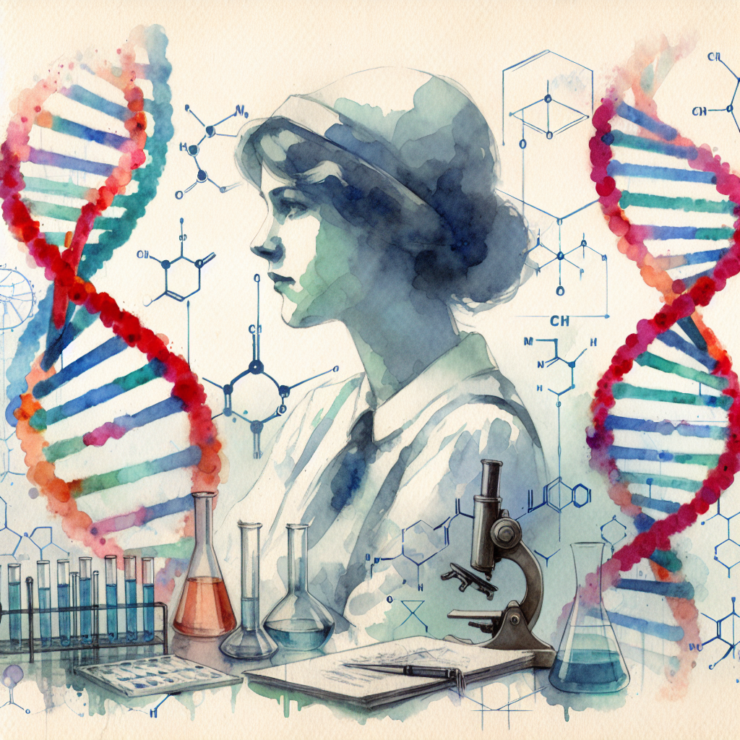How much do you know about the structure of DNA? Most people might quickly mention James Watson and Francis Crick, the duo celebrated for discovering the double helix model of DNA in 1953. However, there’s an unsung heroine in this scientific saga: Rosalind Franklin, a pioneering female scientist whose crucial contributions have only been fully appreciated in hindsight.
Rosalind Franklin was born on July 25, 1920, in London, England. She pursued her passion for science at Newnham College, Cambridge University, where she earned a degree in physical chemistry. After her graduation, Franklin embarked on a research career that took her across the frontiers of X-ray crystallography, a technique that would later pave the way for her most famous work1.
Franklin’s work on the X-ray diffraction images of DNA, particularly the photograph known as “Photo 51,” was pivotal. Taken in 1952, this image revealed the double helix structure of DNA, a discovery that would reshape the biological sciences forever2. However, Franklin’s contribution was largely overshadowed at the time by her male colleagues, James Watson and Francis Crick, who used her findings without her direct acknowledgement to formulate the now-famous model of DNA3.
Despite the lack of recognition for her work on DNA during her lifetime, Franklin’s research was far from over. She moved on from studying DNA to pioneering work on the molecular structures of viruses, laying foundational knowledge for the field of virology. Her studies on the tobacco mosaic virus4 and the polio virus5 opened new avenues for vaccines and treatments.
Sadly, Rosalind Franklin’s career was cut short when she died at the young age of 37 from ovarian cancer in 19586. It wasn’t until years later that the scientific community and the world at large began to recognize her monumental contributions to the understanding of the molecular structure of living things. In 1962, Watson, Crick, and Maurice Wilkins were awarded the Nobel Prize in Physiology or Medicine for their work on the structure of DNA, a prize Franklin was ineligible for posthumously7.
The narrative of Rosalind Franklin serves as a poignant reminder of the trials faced by women in science, both past and present. Her story is a testament to the importance of giving credit where it’s due and recognizing the collective effort in the advancement of knowledge. Franklin’s legacy lives on, inspiring future generations of scientists to pursue their curiosity with determination and integrity.
“Science, for me, gives a partial explanation of life… I do not believe that we shall ever have a reasonable complete theory of life.” – Rosalind Franklin8. This quote encapsulates the humble, inquisitive spirit that drove Franklin throughout her life, a beacon for all those who tread the path of discovery.
- https://www.biography.com/scientist/rosalind-franklin [↩]
- https://embryo.asu.edu/pages/photograph-51-rosalind-franklin-1952 [↩]
- https://lmuthisweek.lmu.edu/2021/03/22/sexism-in-science-was-rosalind-franklin-robbed-of-a-nobel-prize/ [↩]
- https://pubmed.ncbi.nlm.nih.gov/18702397/ [↩]
- https://airandspace.si.edu/stories/editorial/rosalind-franklin-dark-lady-dna [↩]
- https://www.britannica.com/biography/Rosalind-Franklin [↩]
- https://www.nobelprize.org/prizes/medicine/1962/summary/ [↩]
- https://ddsn.com/blog/digital-design-service-technology-quotes/dr-rosalind-franklin.html [↩]




































Add comment